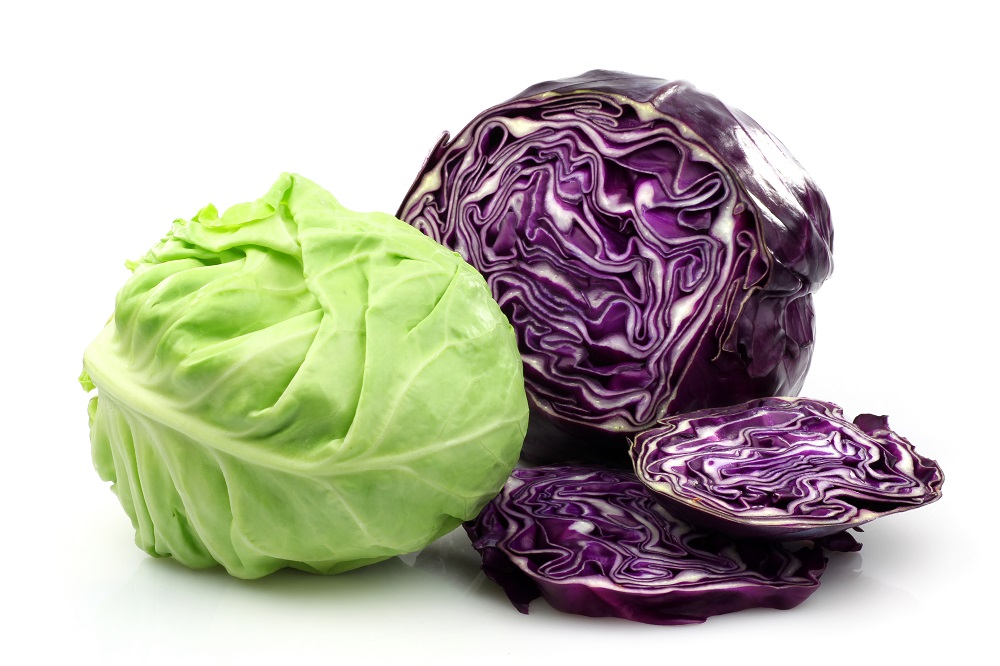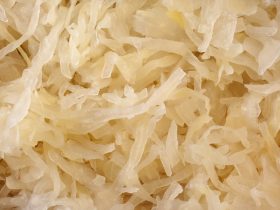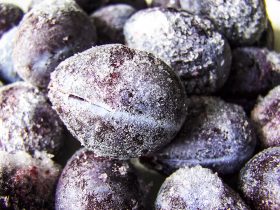Cabbage is a leafy vegetable that sprouts during cool seasons. The top 10 cabbage-producing nations produce over 55 million tons of cabbage every year. However, significant amounts of cabbage end in wastes. Fortunately, the useful life of cabbage, both from a nutrient and quality standpoint, can be extended through freezing.
Freezing cabbage can be done but there are nuances for optimal quality. Cabbage is largely made up of water, constituting more than 90% of its total weight, and water retention is key to retaining its vitamins and nutrients.
Cabbage respiration and transpiration are crucial determinants to successfully freezing cabbage. We control these factors through proper handling and storage in processes that include washing, blanching, drying, and packaging. As for cabbages with extreme moisture loss (freezer burn), alternative uses are available to the end-user. Freezing injury, through over freezing, is also an issue that needs consideration.
Freezing Cabbage Overview
Freezing cabbage is possible with a few key subtleties to keep in mind. Handling, storage, slicing or shredding, freezing temperature, and cabbage classification are some of the nuances to consider.
Cabbages are low-to-moderately susceptible to freezing injury and, at worst, the freezer burn cabbages are still edible and have their uses.
But for the best results, ensure a low surface-to-volume ratio whenever possible, rinse and remove dirt through proper washing, do away with bacteria through blanching, flash-freeze, store in an air-tight container, and ensure you do not freeze cabbage beyond its estimated freezing point.
Respiration and Transpiration
Cabbage, like other fruits and vegetables, is a living tissue that respires (that breathes) after it is harvested or detached from the soil. Respiration, or the process of using oxygen and sugar to produce energy for plant growth, does not stop when cabbage is harvested. This means its composition and physiology continuously change until it deteriorates and dies.
Relative to other fruits and vegetables, cabbage has a comparatively moderate respiration rate. At any given temperature, a whole cabbage is expected to respire anywhere from 2 to 25ml CO2/kg-hr. The faster the cabbage respires, the quicker it dies as it transpires, or it gives off water vapor, at a faster rate.
The following table shows the estimated respiration of cabbage at various temperatures. At higher temperatures, cabbage loses more water and, effectively, vitamins and minerals such as vitamins A and C, fiber, potassium, and magnesium.
| Temperature | 0°C (32°F) | 5°C (41°F) | 10°C (50°F) | 15°C (59°F) | 20°C (68°F) |
| ml CO2/kg·hr | 2-3 | 4-6 | 8-10 | 10-16 | 14-25 |
Cabbage Handling and Storage
It is clear how water retention through proper handling and storage is essential. Freshly picked cabbage is especially crispy and may last up to two weeks in the fridge — even unwashed. But to prolong its life, storage in a freezer with low temperatures and relatively high humidity — or high water content — is necessary.
According to a study by The University of Maine, losses in horticultural crops due to improper storage and handling range from 10 to 40 percent. These include lowered quality, reduced shelf life, substandard taste, unacceptable texture, and unsuitable appearance.
They have found that careful handling and optimal storage conditions slow down the biological processes of cabbages. For example, sliced or shredded cabbage will likely transpire more than whole cabbage. Or that proper washing and blanching promote water retention and is expected to prolong its life.
Sliced or Shredded vs Whole Cabbage

Sliced or shredded cabbage has a high surface-to-volume ratio compared to whole cabbage. This translates to greater exposure to external factors and can result in faster respiration and transpiration rates.
But there is a tradeoff between ease of storage and shelf life. Whole cabbage, due to its lower surface-to-volume ratio, should have a longer shelf life but the challenges of thawing need to be considered. The decision to slice/shred or not then depends on the expected use of the cabbage.
Washing Cabbage
The proper way of washing cabbage involves the following steps.
- Rinse and remove solids, specks of dust, and dirt.
- Soak the cabbage in water with salt. The use of salt is an attempt to kill pests and other bugs that may have stayed after the initial rinse-and-removal step.
- Remove the damaged outer leaves. This prevents the wilting of adjacent leaves.
Although washing reduces the elements that expedite spoilage, blanching is necessary to extend the storage life of cabbage beyond months.
Blanching Cabbage
Freezing cabbage without blanching is possible but at the expense of significantly reduced storage life. Blanching also preserves the crispiness of raw cabbage. The extended shelf-life and improved quality are two important benefits of blanching.
Blanching is a process that involves submerging cabbage in boiling water for 1 to 2 minutes. Boiled water is presumed to kill bacteria and other microorganisms.
After it is soaked in boiling water, the next step is to immerse the cabbage in ice-cold water and stop the cooking process. Then remove the cabbage from the water and drain all excesses.
Dried cabbage prevents freezer burn and brown spots, so it is best to deplete as much external excess water as possible. External excess water is not to be confused with the moisture content of cabbage.
Flash Freezing (Optional) Cabbage
Flash freezing requires equipment capable of cryogenic temperatures which may not be accessible to most people. For the longest possible shelf-life of cabbage, flash freezing is a requisite. Flash freezing also promotes the retention of nutrients and delays the decaying process.
Once the cabbage is completely dry, lay it on a tray or baking sheet. For sliced or shredded cabbage, it is important to lay them out separately. Ensure the free circulation of cold air and avoid the formation of ice crystals as these will have adverse effects on cabbage quality.
After flash freezing the cabbage, transfer it to an air-tight container, or wrap, to avoid air exposure and freezer burn. Using a vacuum seal is recommended to protect the cabbage from developing freezer burn.
Freezing Point of Cabbage
According to the Postharvest Management of Commercial Horticultural Crops (“PMCHC”) bulletin, number 4135, Storage Conditions – Fruits & Vegetables, the freezing point for cabbage is 30.4 degrees Fahrenheit, or negative 0.8889 degrees Celsius.
This is the limit to freeing cabbage, and going beyond this limit can cause freezing injury to the produce.
Cabbage Freezing Injury
Freezing injury in cabbage is manifested by water-soaked and dull-looking leaves.
In the same study by the PMCHC, cabbage is classified with a low-to-moderately susceptible rating to freezing injury. For reference, this is the same rating as pears, peas, spinach, and apples.
Cabbages are also classified as either “early cabbage” or “late cabbage” depending on when they are best planted and harvested. This classification matters to the approximate storage life of cabbage. Early cabbage can be stored for 3 to 6 weeks, while late cabbage can be stored for months without freezing injury.
Freezer Burn on Cabbages
Freezer burn means losing moisture due to storage in a freezer, specifically when the dry air causes dehydration and oxidation to the frozen goods. Although freezer burn affects the quality, taste, and appearance of the cabbage, it is safe to eat.
For quality-sensitive uses though, cabbages with freezer burn may not suffice. In these instances, alternative uses, such as ingredients for smoothies or shakes, are available.





Hi, I'm Dom
Dom Eats was started to help other people fall in love with food. While cooking can feel intimidating, it doesn't have to be.